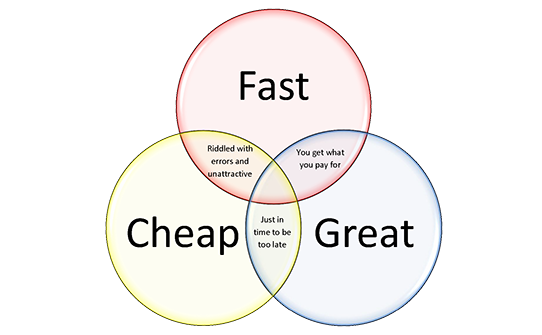It’s a situation most people have encountered, and it goes something like this: “Hey! I need you to complete (insert project of your choice) in a really short amount of time, and by the way, we have little to no budget. Not a problem, is it?” As small non-profits, museums regularly find themselves in this conundrum. In the Exhibits department we call it the holy trinity: fast, cheap, and great. Most of the time, however, you can only reasonably be expected to achieve two.
- Fast + cheap ≠ great
- Cheap + great ≠ fast
- Great+ fast ≠ cheap

So what can you do? In the absence of superpowers, we’ve integrated a number of techniques into our daily exhibit operations to help us get closer to the “impossible utopia” of fast, cheap, and great.
Fordization
Henry Ford’s great success as an automobile manufacturer came from standardizing everything – methods, parts, and tools. As much as possible we have standardized the hardware and material we use in building exhibits. This provides many benefits: eliminates the possibility of error, easier to remember components when designing, and it’s cheaper to buy in bulk. Being more efficient saves resources – time and money – neither of which we ever have enough of.
Reuse and Recycle
It’s not just fashionable to go green, but it saves resources. We always take a look at our existing inventory first and ask, “How can we re-purpose it?” But, if we need to buy something new, we plan for its reuse and buy high quality. The initial expense is made up in its longevity.
KISS (keep it simple stupid)
This applies to so many things, but especially exhibits. We design components to be not only durable but easily fixable – because nothing can withstand a determined five-year-old. Our most utilized designs are ones that we’ve used for years because they have withstood the test of time. We also keep in mind who will be maintaining and repairing the components; the repair has to be within their ability.
Learn from History
It’s okay to stop using something if it doesn’t work, even if it’s been around for years. We have started to consciously plan to our existing resources. It seems self-evident, but checking to make sure an exhibit case will move through a doorway and can be moved by two people saves a lot of heartburn later.
Although these techniques were developed for exhibit production they can be applied to many other areas. Ta Da!

